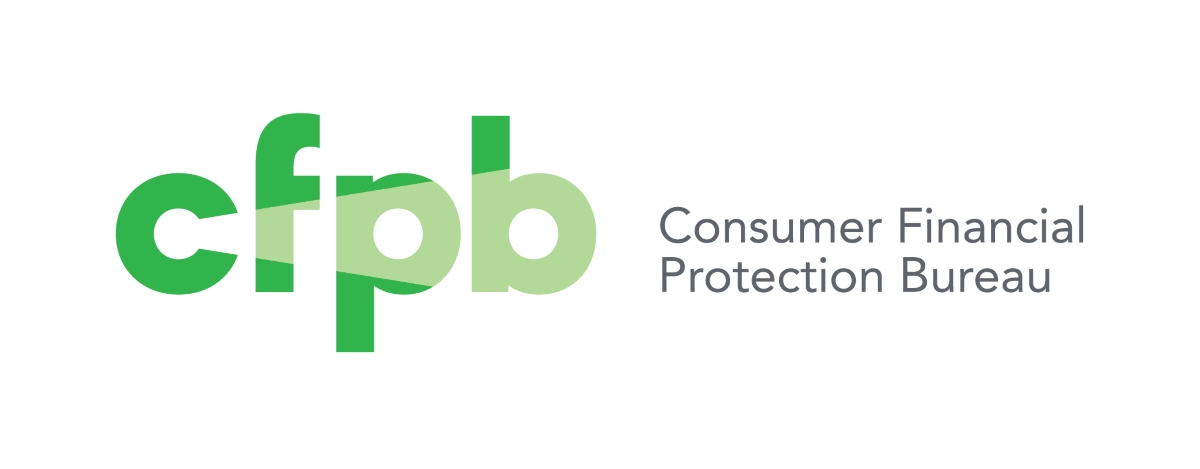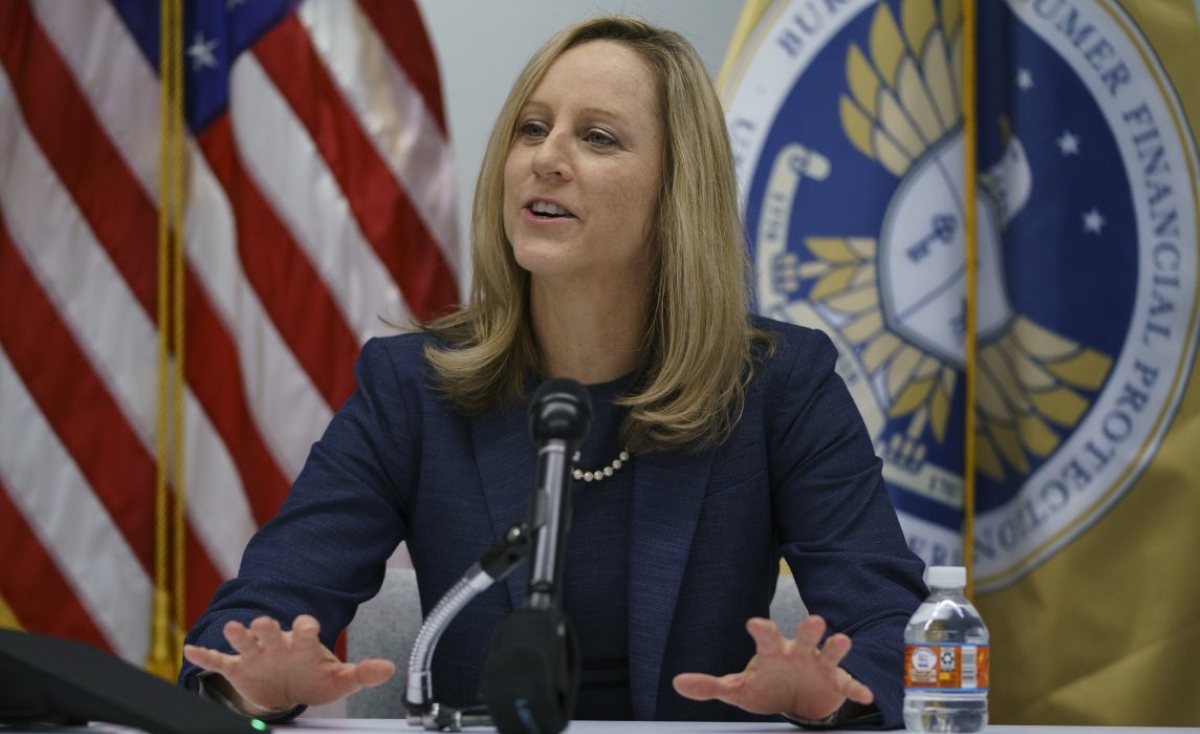

Finance
What Constitutes Financial Protection?
Published: December 23, 2023
Discover what financial protection really means in the world of finance and how you can ensure your assets are secure for the future.
(Many of the links in this article redirect to a specific reviewed product. Your purchase of these products through affiliate links helps to generate commission for LiveWell, at no extra cost. Learn more)
Table of Contents
- Introduction
- Definition of Financial Protection
- Importance of Financial Protection
- Elements of Financial Protection
- Insurance as a Financial Protection Tool
- Saving and Investment Strategies for Financial Protection
- Budgeting and Financial Planning for Financial Protection
- Emergency Funds for Financial Protection
- Education and Financial Literacy for Financial Protection
- Conclusion
Introduction
Financial protection is a crucial component of a sound and secure financial strategy. In today’s unpredictable world, it is essential to safeguard our financial well-being by putting measures in place to protect ourselves and our loved ones from financial hardships. But what exactly does financial protection entail? In this article, we will explore the meaning of financial protection, delve into its importance, and discuss the various elements that contribute to a comprehensive financial protection plan.
Financial protection can be defined as the strategies and measures individuals or households take to mitigate financial risks and ensure stability in the face of unforeseen events. These events can range from job loss and illness to natural disasters and economic downturns. The goal of financial protection is to provide a safety net that safeguards our financial resources, ensuring that we can weather any storm and maintain our financial security.
Now more than ever, financial protection is of utmost importance. The global pandemic has highlighted the need for individuals and families to have robust financial safety nets in place. It has reminded us of the uncertainty that can arise at any moment and the profound impact it can have on our lives and financial well-being.
Financial protection is not just about protecting our physical assets; it also involves safeguarding our income, investments, and overall financial stability. It is about creating a resilient financial foundation that can withstand economic challenges and unexpected life events. By proactively implementing financial protection strategies, we can mitigate risks, minimize potential losses, and ensure our long-term financial security.
In the following sections, we will explore the key elements of financial protection and discuss the tools and strategies that can help us achieve it. Whether through insurance, savings and investments, budgeting, or financial education, each element plays a crucial role in building a robust financial protection plan. Moreover, we will highlight the importance of understanding our individual financial needs and goals to create a tailored strategy that is best suited to our unique circumstances.
Now, let’s dive deeper into the various elements that constitute financial protection and learn how we can build a solid foundation to safeguard our financial future.
Definition of Financial Protection
Financial protection refers to the set of measures and strategies individuals, households, and businesses employ to shield themselves from unexpected financial hardships. It involves creating a safety net that safeguards our financial resources, ensuring our ability to withstand and recover from various risks and uncertainties.
Financial protection goes beyond just protecting physical assets; it encompasses preserving income, investments, and overall financial stability. It encompasses a proactive approach to managing and mitigating potential risks that can impact our financial well-being.
At its core, financial protection is about being prepared for the unexpected. It involves anticipating and planning for potential risks, such as job loss, illness, disability, accidents, natural disasters, or economic downturns. By implementing appropriate strategies, individuals can minimize the financial impact of these events and maintain their financial security.
One of the key aspects of financial protection is having a comprehensive insurance plan. Insurance acts as a financial safety net, providing coverage and compensation against a variety of risks. This includes health insurance to cover medical expenses, life insurance to protect loved ones in the event of death, disability insurance to replace lost income due to disability, and property insurance to safeguard physical assets.
However, financial protection extends beyond insurance. It also encompasses prudent financial planning, budgeting, and saving and investment strategies. By establishing a solid financial foundation and building up emergency funds, individuals can better navigate unforeseen circumstances without jeopardizing their long-term financial goals.
In today’s increasingly interconnected world, financial protection has also become intertwined with cybersecurity. With the rise of digital transactions and online platforms, protecting personal and financial information from cyber threats is crucial. Ensuring secure online banking and utilizing strong passwords and encryption measures are essential to safeguarding our financial well-being in the digital age.
Ultimately, financial protection is about taking a proactive and holistic approach to managing financial risks. It involves understanding our unique circumstances, identifying potential vulnerabilities, and implementing strategies to mitigate those risks. By doing so, we can create a solid foundation that allows us to navigate whatever challenges life may throw our way and maintain our financial security.
Importance of Financial Protection
Financial protection plays a pivotal role in ensuring our long-term financial well-being and providing a sense of security in an increasingly uncertain world. Here are some key reasons why financial protection is of utmost importance:
1. Mitigating Risk and Uncertainty
Life is full of uncertainties, and unexpected events can pose significant financial challenges. Whether it’s a sudden job loss, a medical emergency, or a natural disaster, these events can have a substantial impact on our financial stability. Financial protection allows us to mitigate these risks and minimize the financial consequences when unexpected circumstances arise.
2. Preserving Financial Resources
Financial protection helps safeguard our hard-earned financial resources. By having adequate insurance coverage in place, we can protect our physical assets, such as our homes and vehicles, from potential damage or loss. Additionally, by implementing saving and investment strategies, we can build up a financial cushion that allows us to weather difficult times and preserve our financial well-being.
3. Ensuring Financial Stability
Financial protection is essential for maintaining stability in both the short term and the long term. When faced with unexpected financial challenges, having a safety net in place provides a sense of security and peace of mind. It allows us to maintain our daily living expenses, meet financial obligations, and continue working towards our long-term financial goals without interruption.
4. Protecting Loved Ones
Financial protection goes beyond our own well-being; it also ensures the financial security of our loved ones. By having a comprehensive life insurance policy, we can provide financial support to our family members in the event of our untimely death. This helps ensure that they are taken care of, allowing them to maintain their quality of life and pursue their own financial goals.
5. Building a Strong Financial Foundation
Financial protection is the cornerstone of building a solid financial foundation. It involves creating an emergency fund, establishing a budget, and implementing saving and investment strategies. By laying this groundwork, we can better navigate financial challenges, avoid debt, and work towards achieving financial independence and prosperity.
6. Peace of Mind
Perhaps one of the greatest benefits of financial protection is the peace of mind it brings. Knowing that we have a plan in place to handle unexpected financial situations provides a sense of security and reduces stress. It allows us to focus on other areas of our lives, confident in the knowledge that our financial well-being is safeguarded.
Overall, financial protection is vital for both individuals and households. It allows us to manage risks, preserve our financial resources, and ensure stability in the face of uncertainty. By taking proactive steps to protect ourselves financially, we can navigate life’s challenges with confidence and achieve long-term financial security and peace of mind.
Elements of Financial Protection
Financial protection encompasses various elements that work together to create a comprehensive strategy for safeguarding our financial well-being. These elements include:
1. Insurance Coverage
Insurance is a fundamental component of financial protection. It involves obtaining adequate coverage for various aspects of our lives, such as health, life, disability, property, and liability. Insurance provides financial compensation in the event of unforeseen circumstances, helping to mitigate the financial impact of accidents, illnesses, or other risks.
2. Saving and Investment Strategies
Building savings and investment portfolios is an essential part of financial protection. Saving money allows us to create an emergency fund, providing a financial cushion during times of unexpected expenses or income loss. Additionally, investing in diverse assets can help us grow our wealth over time and protect against inflation, ensuring long-term financial stability.
3. Budgeting and Financial Planning
Effective budgeting and financial planning are key elements of financial protection. Creating a budget helps us track income and expenses, ensuring that we have enough resources to cover essential needs and save for the future. Financial planning involves setting realistic goals, identifying potential risks, and establishing a roadmap to achieve our financial objectives.
4. Emergency Funds
Emergency funds provide a safety net during unexpected financial challenges. Setting aside a portion of our income in an easily accessible savings account helps us cover unforeseen expenses, such as medical emergencies, car repairs, or job loss, without resorting to debt or depleting our long-term savings.
5. Debt Management and Creditworthiness
Managing debt and maintaining good creditworthiness are crucial aspects of financial protection. By minimizing and responsibly managing debt, we reduce financial vulnerability and ensure that our debts do not overwhelm our ability to meet other financial obligations. Good creditworthiness allows us to access favorable loan terms and secure financial opportunities when needed.
6. Education and Financial Literacy
Education and financial literacy are vital for making informed financial decisions and protecting ourselves from scams and exploitative practices. By understanding concepts such as interest rates, investment vehicles, and financial regulations, we can navigate the financial landscape with confidence and make wise financial choices.
7. Estate Planning
Estate planning is an often overlooked but critical element of financial protection. It involves creating a plan for the distribution of assets and the care of dependents after our passing. Having a clear and updated estate plan helps protect our loved ones, ensures our assets are distributed as intended, and minimizes potential disputes or legal complications.
By incorporating these elements into our overall financial strategy, we can establish a robust framework for financial protection. Each element plays a unique role in mitigating risks, managing resources, and creating a secure financial future. Consulting with financial professionals can provide further guidance in developing a tailored financial protection plan that aligns with our specific needs and goals.
Insurance as a Financial Protection Tool
Insurance is a powerful financial protection tool that safeguards individuals and businesses against unforeseen risks and provides a safety net in times of crisis. By transferring the financial burden of potential losses to an insurance company, individuals can protect their assets, income, and overall financial well-being. Here are several key reasons why insurance is essential for comprehensive financial protection:
1. Risk Transfer and Mitigation
Insurance functions by transferring and mitigating risks. By paying regular premiums, individuals transfer the potential financial burden of a loss to an insurance company. This allows individuals to mitigate the impact of unexpected events, such as accidents, illnesses, natural disasters, or liability claims, on their personal finances.
2. Asset Protection
Insurance provides protection for valuable assets, such as homes, cars, or businesses. Property insurance covers damage or loss due to fire, theft, or natural calamities, ensuring that individuals are not financially devastated by such events. Additionally, it offers liability coverage in case someone is injured on the insured property, protecting individuals from potential legal claims.
3. Health and Medical Expenses
Health insurance is a critical form of insurance that helps individuals manage healthcare costs. It covers medical expenses, hospitalization, surgeries, and doctor visits, relieving individuals from the burden of high healthcare bills. Health insurance also provides coverage for prescription medications, preventive care, and specialized treatments, ensuring access to necessary medical services without financial strain.
4. Life and Disability Protection
Life insurance serves as a financial safety net for loved ones in the event of the insured person’s death. It provides a lump sum payment to beneficiaries, which can be used to replace the lost income, cover funeral expenses, pay off debts, or ensure financial stability for the future. Disability insurance, on the other hand, offers income replacement if the insured person becomes disabled and unable to work, ensuring that their financial obligations can continue to be met.
5. Business Continuity
For businesses, insurance is crucial for protecting against various risks that could threaten operations and financial viability. Commercial insurance policies, such as general liability, property, and professional liability insurance, provide coverage for potential losses related to lawsuits, property damage, or business interruption. This allows businesses to continue their operations and recover from unforeseen events without suffering severe financial setbacks.
6. Peace of Mind
One of the most significant benefits of insurance is the peace of mind it brings. Knowing that you have coverage in place provides a sense of security and relief, allowing individuals to focus on other aspects of their lives without constantly worrying about potential financial catastrophes. Insurance gives individuals the confidence to pursue their personal and professional goals, knowing that they are protected against unforeseen risks.
It is important to carefully evaluate and select insurance policies that align with individual needs and priorities. Working with knowledgeable insurance professionals can help individuals make informed decisions and choose the right coverage options. By incorporating insurance as a key component of their financial protection strategy, individuals can achieve peace of mind and ensure a solid foundation for their financial future.
Saving and Investment Strategies for Financial Protection
Saving and investment strategies are essential components of financial protection, providing individuals with the means to build wealth, secure their financial future, and protect against unforeseen circumstances. Here are several key saving and investment strategies that can contribute to comprehensive financial protection:
1. Emergency Fund
Building an emergency fund should be a priority for everyone. An emergency fund consists of a readily accessible savings account set aside for unexpected expenses, such as medical bills, home repairs, or job loss. Aim to save at least three to six months’ worth of living expenses in your emergency fund to provide a financial buffer in times of crisis.
2. Retirement Savings
Investing in retirement savings is crucial for long-term financial protection. Consider participating in employer-sponsored retirement plans, such as a 401(k) or similar programs, and contribute consistently. Additionally, explore individual retirement accounts (IRAs) or other retirement savings options to maximize your retirement savings potential. Over time, these investments can grow and provide a stable income source during retirement.
3. Diversify Investments
Diversification is key when it comes to investment strategies. Spreading out investments across different asset classes, such as stocks, bonds, and real estate, helps mitigate risks. By diversifying, you reduce the potential impact of a single investment downturn on your overall portfolio. Seek guidance from a financial advisor to create a diversified investment portfolio that aligns with your risk tolerance and financial goals.
4. Regular Saving and Automated Payments
Develop a habit of regular saving and automate your savings whenever possible. Set up automatic transfers from your checking account to your savings or investment accounts on a regular basis. This helps ensure consistent contributions and reduces the temptation to spend money impulsively. Automating payments also helps prioritize savings and investments, making them as essential as other financial obligations.
5. Tax-Advantaged Savings Accounts
Take advantage of tax-advantaged savings accounts, such as Health Savings Accounts (HSAs) and 529 plans for education savings. HSAs offer tax benefits for qualified medical expenses and can serve as a supplemental emergency fund. 529 plans provide tax advantages for education-related expenses and help prepare for future education expenses for yourself, your children, or other family members.
6. Regular Review and Adjustment
Regularly review your saving and investment strategies to ensure they align with your evolving financial goals and circumstances. Reassess your risk tolerance, adjust investment allocations, and rebalance your portfolio periodically. Life events, economic conditions, and personal circumstances can influence your financial protection needs and may require adjustments in your saving and investment approach.
7. Seek Professional Advice
Consider consulting a financial advisor or planner to help develop and refine your saving and investment strategies. They can offer personalized guidance, help assess your risk tolerance, and recommend suitable investment options based on your financial goals. A professional can also help you navigate changing market conditions and provide insights into long-term financial protection strategies.
Remember that saving and investing for financial protection requires discipline, patience, and a long-term perspective. By implementing these saving and investment strategies, you can build a strong financial foundation, protect against unexpected events, and create a pathway to a secure and prosperous financial future.
Budgeting and Financial Planning for Financial Protection
Budgeting and financial planning are crucial elements of financial protection, enabling individuals to manage their resources, make informed decisions, and achieve their long-term financial goals. Here are several key reasons why budgeting and financial planning are essential for comprehensive financial protection:
1. Expense Management
Creating a budget helps individuals track their income and expenses, enabling them to gain a clear understanding of where their money is being spent. By identifying areas of overspending or unnecessary expenses, individuals can make adjustments, redirecting funds towards savings, investments, or essential needs. Effective expense management ensures that financial resources are allocated strategically and in line with their financial goals.
2. Debt Reduction
Budgeting and financial planning provide a framework for debt reduction and management. By allocating a portion of their income towards debt repayment, individuals can systematically pay down balances over time, reducing interest costs and improving their financial standing. Budgeting helps prioritize debt payments and prevents the accumulation of additional debt, enhancing financial resilience and protection.
3. Savings and Emergency Funds
Budgeting allows individuals to allocate funds towards savings and emergency funds systematically. By setting specific saving goals and contributing a portion of their income regularly, individuals can build up emergency funds, providing a financial safety net for unexpected expenses or income disruptions. Financial planning helps determine the target amount for emergency funds and guides the progress towards achieving those goals.
4. Goal Setting and Achievement
Financial planning enables individuals to set specific financial goals and develop a roadmap for achieving them. Whether it’s saving for a down payment on a house, funding education, or planning for retirement, having clear goals in place helps individuals stay focused and committed. Budgeting ensures that resources are allocated towards these goals systematically, making progress and achieving financial milestones.
5. Risk Management and Insurance Planning
Financial planning involves assessing potential risks and developing strategies to manage them effectively. This includes evaluating insurance needs and ensuring adequate coverage for life, health, property, and liability. By considering potential risks and managing them through insurance, individuals can protect their financial well-being and minimize the impact of unexpected events.
6. Retirement Planning
Financial planning includes retirement planning, which is essential for long-term financial protection. By assessing retirement needs, determining the desired lifestyle, and estimating retirement expenses, individuals can develop a savings and investment strategy to ensure a comfortable retirement. Budgeting plays a crucial role in allocating funds towards retirement savings on a regular basis.
7. Periodic Assessment and Adjustment
Budgeting and financial planning are not one-time tasks but require ongoing assessment and adjustment. Individuals should regularly review their budgets and financial plans, considering changes in income, expenses, goals, and life circumstances. This allows for flexibility and ensures that the financial protection strategies remain aligned with current needs and objectives.
Overall, budgeting and financial planning serve as the foundation for comprehensive financial protection. They provide individuals with the tools and knowledge to effectively manage their finances, make informed decisions, and protect against unexpected events. By incorporating budgeting and financial planning into their financial routine, individuals can achieve financial security, progress towards their goals, and confidently navigate any challenges that may arise.
Emergency Funds for Financial Protection
An emergency fund is a critical component of financial protection, serving as a safety net to mitigate the financial impact of unexpected expenses or income disruptions. Here are several key reasons why having an emergency fund is essential for comprehensive financial protection:
1. Unforeseen Expenses
Life is full of unexpected events that can cause financial strain. Whether it’s a medical emergency, car repairs, home maintenance, or an unexpected job loss, these unforeseen expenses can arise at any time. Having an emergency fund allows individuals to cover these expenses without resorting to credit cards, loans, or draining their long-term savings.
2. Income Loss or Disruption
An emergency fund becomes vital during income disruptions, such as job loss, reduced working hours, or business slowdowns. It provides individuals with a financial cushion to cover essential expenses, such as rent or mortgage payments, utilities, food, and healthcare, while they search for new employment or deal with the income shortfall. It helps maintain financial stability and reduces the stress associated with sudden income loss.
3. Peace of Mind
Having an emergency fund provides a sense of security and peace of mind. Knowing that you have funds set aside for unforeseen circumstances alleviates financial stress and allows you to cope with unexpected events without panic. This peace of mind can positively impact mental and emotional well-being, enabling individuals to focus on other aspects of their lives with confidence.
4. Avoiding Debt
An emergency fund acts as a buffer against accumulating debt. Instead of relying on credit cards or loans to cover unexpected expenses or income gaps, individuals can tap into their emergency funds. By using their own savings, they can avoid high-interest debt and the potential financial pitfalls associated with it, allowing them to maintain a healthier financial outlook.
5. Flexibility and Financial Freedom
With an emergency fund, individuals gain flexibility and financial freedom. They have the ability to make important financial decisions without feeling forced or rushed. Emergency funds provide options, whether it’s pursuing new career opportunities, investing in personal or professional growth, or having the freedom to address unforeseen circumstances confidently.
6. Building Resilience
An emergency fund helps individuals build financial resilience. By proactively setting aside money for emergencies, individuals become better prepared to face unforeseen situations. This resilience reduces the impact of financial shocks, improves their ability to recover quickly, and helps maintain their overall financial well-being.
When building an emergency fund, aim to save at least three to six months’ worth of living expenses. Start by setting aside a small amount from each paycheck and gradually increase your contributions over time. Keep the funds easily accessible in a separate savings account or a money market account, ensuring they can be accessed quickly when needed.
In summary, an emergency fund is a key pillar of financial protection. It provides individuals with the means to handle unexpected expenses or income disruptions without resorting to debt or depleting their long-term savings. By maintaining an emergency fund, individuals can achieve greater peace of mind, financial stability, and the ability to navigate unforeseen circumstances with confidence.
Education and Financial Literacy for Financial Protection
Education and financial literacy play a crucial role in building strong financial protection. By acquiring knowledge and understanding financial concepts, individuals can make informed decisions, protect themselves from scams and exploitative practices, and secure their financial well-being. Here are some key reasons why education and financial literacy are vital for comprehensive financial protection:
1. Empowerment and Confidence
Education and financial literacy empower individuals to take control of their financial lives. By understanding financial concepts, terminology, and strategies, individuals can make confident decisions about saving, investing, budgeting, and managing debt. This empowerment enables individuals to navigate complex financial situations and make choices aligned with their long-term goals and values.
2. Protection Against Scams and Fraud
Financial literacy equips individuals with the knowledge and skills to protect themselves from scams and fraudulent activities. By understanding common financial scams, identity theft, and fraudulent investment schemes, individuals can identify warning signs, ask the right questions, and make informed choices. Financially literate individuals are less susceptible to falling victim to fraudulent schemes, protecting their financial resources and assets.
3. Smart Money Management
Financial literacy provides individuals with the tools to effectively manage their money. It includes budgeting, understanding credit scores, managing debt, and making informed choices about saving and investing. By developing these skills, individuals can optimize their financial resources, reduce financial stress, and achieve their financial goals.
4. Making Informed Financial Decisions
A strong foundation in financial literacy enables individuals to make informed decisions about financial products and services. It includes understanding the terms and conditions of loans and credit cards, evaluating insurance policies, and assessing investment opportunities. Informed decision-making helps individuals choose the best financial options for their specific needs, minimizing the risk of costly mistakes or poor financial outcomes.
5. Planning for Long-Term Financial Goals
Financial literacy allows individuals to plan and strategize for long-term financial goals. Whether it’s saving for retirement, funding education, or purchasing a home, understanding financial concepts and strategies helps individuals develop effective plans. Financially literate individuals can create realistic goals, develop savings and investment plans, and adapt to changing circumstances to ensure their long-term financial security.
6. Teaching the Next Generation
By developing financial literacy, individuals can pass on important financial knowledge to future generations. Teaching children and young adults about money management, saving, and investing helps them develop healthy financial habits from an early age. Financially literate individuals can equip their children with the skills and knowledge necessary to make responsible financial decisions, setting them up for a more financially secure future.
Financial literacy can be acquired through various means, including workshops, courses, online resources, and books. It is also essential to stay up to date with changing financial regulations and trends to make informed choices. Taking the initiative to continually educate oneself about personal finance and financial protection is a lifelong endeavor that pays off in terms of improved financial well-being and enhanced peace of mind.
By investing in education and financial literacy, individuals can build a stronger financial foundation, protect themselves from financial pitfalls, and make informed decisions to secure their long-term financial well-being.
Conclusion
Financial protection is a fundamental aspect of building a secure and resilient financial future. By implementing comprehensive strategies and incorporating key elements such as insurance, saving and investment strategies, budgeting, emergency funds, and financial literacy, individuals can safeguard their financial well-being and mitigate the impact of unexpected events.
Insurance serves as a vital financial protection tool, transferring and mitigating risks by providing coverage for various aspects of life, such as health, life, disability, and property. Saving and investment strategies create a solid financial foundation, allowing individuals to build emergency funds, save for retirement, and accumulate wealth over time.
Budgeting and financial planning are essential for managing resources effectively, making informed decisions, and achieving financial goals. They help individuals track income and expenses, reduce debt, allocate funds towards savings and investments, and navigate changing circumstances with confidence.
Emergency funds provide a financial safety net, enabling individuals to cover unforeseen expenses or income disruptions without resorting to debt or depleting long-term savings. They provide peace of mind and flexibility, ensuring individuals can handle unexpected events and maintain financial stability.
Education and financial literacy play a vital role in financial protection, empowering individuals to make informed decisions, protect against scams, and manage their finances effectively. By continuously educating themselves and passing on financial knowledge to future generations, individuals can build a strong financial legacy and enhance financial security.
In conclusion, financial protection is not a one-size-fits-all approach. It requires a personalized strategy that incorporates various elements tailored to individual circumstances and goals. By implementing these strategies and elements, individuals can create a robust financial protection plan that safeguards their financial well-being, promotes resilience, and paves the way for a prosperous future.














